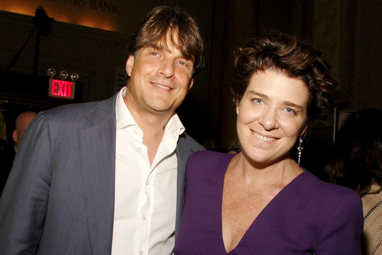The Intersection of Fine Art & Divorce
THE SCENARIO IS A SIMPLE ONE
Husband and Wife built an art collection over the course of the marriage. Wife, who had majored in art history during college, was responsible for selecting the pieces and attending the auctions; Husband paid the invoices. The art was on display in the parties’ residences.
The parties eventually decide to separate and divorce. During the intervening years, the collection appreciated in value. Husband claims that since he paid the invoices, the artwork belongs to him; Wife claims that Husband had no real interest in the artwork and it was effectively a “gift” to her during the marriage. There are no documents assigning title to either of the parties. Who is entitled to the art?
In New York, in the recent case of Anonymous v. Anonymous, 150 A.D.3d 91 (1st Dept. 2017), the Court was called upon to determine the ownership of valuable works of art in the parties’ collection. There, the Husband claimed that a collection worth tens of millions of dollars was his separate property, based upon the language in the parties’ prenuptial agreement which provided that any property “acquired” by a party would remain that party’s separate property. In support of his position, the Husband referred to the invoices which identified the Husband – and not the Wife – as the purchaser of the art.

However, the prenuptial agreement also provided that property which was “jointly held” by the parties would be considered “marital” property and would be equally divided between the parties. It was the Wife’s contention that the parties had agreed to acquire the art as a “joint collection” and therefore it was marital property.
The court found that although the invoices were in the Husband’s name, such invoices were not dispositive on the issue of ownership of the pieces, and remanded the matter for a hearing to determine all of the facts and circumstances surrounding the acquisition of the collection. What did this result mean to the parties in Anonymous? More time. More money. Risk.

What steps can you take to avoid this type of uncertainty and litigation?
- Make sure that each purchase is accompanied by a certificate of title or other document evidencing ownership.
- Make sure that your prenuptial (or post-nuptial) agreement provides that the party who pays for the piece is the owner, and that an invoice or bill of sale would be sufficient proof to establish title.
In the absence of a prenuptial (or postnuptial) agreement providing that title ownership controls the disposition of a particular asset, it remains critically important to maintain proper paperwork regarding the scope of your fine art and collectibles in the event of divorce. Why? Too often marriages dissolve and, because of one party’s “divorce planning,” pieces of art or other valuable items begin to disappear from a home, a second home or storage. The change may not even be initially decipherable. In the context of a divorce litigation, one party may claim he or she believes a watch is missing, or a piece of art was removed from a vacation home, without any way to prove this occurred beyond that person’s memory, leading to an inevitable “he said/she said” scenario.

How do you prevent this from happening to you?
- Check your insurance riders regularly. Make sure that they are up to date and modified as necessary to reflect sales and purchases.
- If you have fine art, jewelry and/or collectibles that are not insured, at a minimum, maintain an inventory (including photos), regularly update and, if possible, include the purchase price for each item.
The critical take-away in either scenario is the importance of maintaining and regularly updating the documentation reflecting the acquisition, ownership and sale of your fine art, jewelry and/or collectibles. The more objective proof there is, the less that will be left to chance.
Michael A. Mosberg, Esq.
Michael, a partner with the firm Aronson, Mayefsky, and Sloan, represents clients in all aspects of family law.
Heidi Harris, Esq.
Heidi, a partner of the firm Aronson, Mayefsky, and Sloan, handles all aspects of matrimonial and family law cases, including negotiating settlement and prenuptial agreements, trying cases and arguing appeals.
FAMILY DIVISION & DIVORCE VALUATIONS
An equitable division of marital assets demands an accurate and properly documented valuation. Pall Mall Art Advisors is regularly asked to consider the value of property acquired by an individual prior to the partnership, or through inheritance and the rise in value of jointly owned items due to market activity.
A pre-nuptial agreement which includes valuations of high value chattels, is increasingly seen as sensible. Again accurate valuations, subject to periodic review, are required.
When faced with the challenges of a divorce, the Visual Inventory provides an accurate account of marital property and is a necessary, date-stamped tool that facilitates the division of assets.
Have a professionally edited Visual Inventory conducted by a seasoned appraisal professional.
OUR SERVICES
Understanding value is the cornerstone to effectively managing a collection – and at The Fine Art Group, it is this understanding that enables us to work as trusted fiduciaries for our clients, and their objects. We are experienced providing appraisals for a wide range of purposes, and are also specialists in unique and complicated appraisal scenarios.


